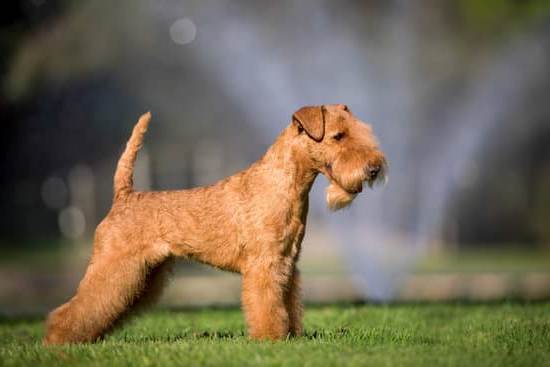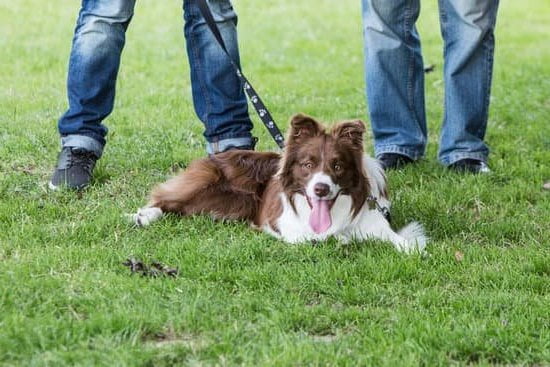What is the best leash to train a dog? Choosing the right leash for dog training is crucial in ensuring a successful and effective training experience for both the pet and the owner.
From material to length, there are various factors to consider when selecting the perfect leash for your furry companion’s training needs. In this article, we will delve into the importance of choosing the right leash for dog training, understanding different types of leashes, factors to consider when choosing a dog training leash, and specific recommendations for different training scenarios.
When it comes to training your dog, having the appropriate leash can make all the difference in achieving positive results. The type of leash used can impact not only the level of control but also the comfort and safety of both you and your pet. Whether you are working on basic obedience or addressing specific behavioral issues, having the right tool at your disposal can significantly impact your ability to communicate effectively with your furry friend.
In this article, we will explore the various types of leashes available, including nylon, leather, rope, and chain options. We will also discuss how factors such as size, material, and length play a role in determining which leash is best suited for your dog’s training needs. Additionally, we will provide insights into special considerations for training aggressive or strong pulling dogs and offer recommendations for top-rated dog training leashes in 2022.
Understanding Different Types of Leashes
When it comes to choosing the right leash for dog training, it’s important to understand the different types of leashes available. Each type has its own set of advantages and can be suitable for specific training needs. Here are the most common types of leashes used for dog training:
- Nylon Leash: Nylon leashes are lightweight, durable, and come in various lengths and widths. They are a popular choice for general obedience training and everyday walks.
- Leather Leash: Leather leashes are strong, stylish, and become more comfortable over time as they soften with use. They are a good option for dogs that have a tendency to pull.
- Rope Leash: Rope leashes are made of nylon or cotton and are great for outdoor activities such as hiking or running with your dog. They provide a secure grip and are resistant to chewing.
- Chain Leash: Chain leashes are extremely durable and chew-proof, making them ideal for strong pulling dogs or dogs that tend to chew through other materials.
When choosing a leash for dog training, there are several factors to consider that can help you make the right decision:
- Size: The size and strength of your dog will determine the width and material of the leash you should choose. Larger, stronger dogs may require a thicker and more durable leash.
- Material: Consider the durability, comfort, and ease of cleaning when choosing the material of the leash. Some materials may be more suitable for certain weather conditions or activities.
- Length: The length of the leash is an important consideration depending on the type of training you will be doing. A longer leash may be preferable for long walks or outdoor activities, while a shorter leash may be better for obedience training in crowded areas.
Understanding the different types of leashes and considering these factors will help you select the best leash for your specific dog training needs.
Factors to Consider When Choosing a Dog Training Leash
When choosing a leash for dog training, it is essential to consider several factors to ensure that you have the right tool to facilitate successful training sessions. The size, material, and length of the leash are crucial elements to take into account when making your decision. Here are some key considerations to keep in mind:
- Size: The size of the leash should be appropriate for your dog’s breed and weight. Larger dogs may require thicker and stronger leashes to withstand their strength, while smaller dogs may need lighter and more flexible options.
- Material: Leashes come in a variety of materials such as nylon, leather, rope, and chain. Each material has its own set of benefits and drawbacks. Nylon leashes are durable and affordable, while leather leashes are stylish and comfortable to handle. Rope leashes provide a firm grip and prevent burns on your hands, while chain leashes offer extra strength for powerful pullers.
- Length: The length of the leash can significantly impact your training sessions. Shorter leashes are ideal for maintaining control over your dog in crowded or high-traffic areas, while longer leashes give them more freedom of movement during off-leash training exercises.
Considering these factors will help you narrow down your options and choose a leash that suits both your dog’s needs and your training objectives. Keep in mind that investing in a high-quality leash can make a substantial difference in the effectiveness of your training efforts.
It is important to assess these factors not only based on your dog’s current size but also taking into consideration its potential growth if it is a puppy or young dog. Being proactive about selecting the right size, material, and length will save you time and money in the long run by avoiding having to buy multiple leashes as your dog grows or as their behavior changes.
The Best Leash for Basic Obedience Training
When it comes to basic obedience training for dogs, choosing the right leash is crucial. Two common options are retractable leashes and standard leashes, each with its own set of advantages and drawbacks.
Retractable leashes are popular for their convenience and flexibility. They allow your dog more freedom to explore while still giving you control. This can be beneficial for teaching commands such as “stay” or “heel” as it provides the dog with more room to move around. However, retractable leashes also have a greater risk of tangling or breaking due to their design, which can be dangerous in certain situations.
On the other hand, standard leashes provide a consistent length and level of control. They are typically made of nylon or leather and are available in various lengths to suit different training needs. Standard leashes offer a stronger grip and can prevent your dog from wandering off or getting too far ahead during training sessions. They are also less likely to malfunction compared to retractable leashes.
It is important to consider your dog’s behavior, size, and personality when deciding between a retractable or standard leash for basic obedience training. Some dogs may respond better to the freedom offered by a retractable leash, while others may require the structure provided by a standard leash for effective training. Ultimately, the best leash for basic obedience training will depend on your individual dog’s needs and your training goals.
| Leash Type | Advantages | Disadvantages |
|---|---|---|
| Retractable Leash | Convenience and flexibility | Potential tangling or breaking |
| Standard Leash | Consistent control and grip | Limited length and range for dog movement |
Training Specific Breeds
When it comes to choosing the right leash for training specific breeds, it’s essential to consider the size and strength of the dog. Different breeds have different needs when it comes to leashes, and understanding these needs is crucial for successful training.
Small Dogs
For small dogs, a lightweight and durable leash is important. Nylon leashes are often a popular choice for small breeds due to their lightweight nature, which allows for easy handling. Additionally, a shorter leash length is recommended for small dogs to maintain control during training sessions. Retractable leashes may not be suitable for small dogs as they can lead to less control and potential tangling.
Large Dogs
On the other hand, large dogs require a stronger and sturdier leash. Many trainers recommend leather leashes for large breeds due to their durability and strength. A longer leash may also be beneficial for large dogs during training exercises that involve recall and distance commands. However, it’s important to ensure that the handler has enough strength and control to manage the extra length of the leash.
Ultimately, when selecting a leash for training specific breeds, it’s crucial to consider the individual characteristics of the dog in question. Understanding the needs of small versus large dogs will help owners choose the most appropriate leash for effective training sessions tailored to their pet’s size and breed.
Special Considerations for Training Aggressive or Strong Pulling Dogs
Aggressive or strong pulling dogs can pose a unique challenge when it comes to leash training. It’s important to choose a leash that can withstand the strength and force of these types of dogs, as well as one that will help you maintain control during training sessions. When it comes to aggressive dogs, safety is also a top priority. The last thing you want is for the leash to snap or break while trying to manage an aggressive dog.
For aggressive or strong pulling dogs, a chain leash may be the best option. Chain leashes are incredibly strong and durable, making them ideal for large and powerful breeds. The weight of the chain can also help in controlling strong pulling dogs. However, it’s important to note that chain leashes can be quite heavy and may not be suitable for all owners.
Another consideration for training aggressive or strong pulling dogs is the length of the leash. A shorter leash can provide more control in close quarters, making it easier to redirect an aggressive dog’s attention or prevent them from lunging. Additionally, consider using a harness rather than just attaching the leash to your dog’s collar, as this can help distribute their weight more evenly and reduce strain on their neck if they do pull forcefully on the leash.
In summary, when training aggressive or strong pulling dogs, choosing a sturdy and durable leash is crucial for both your safety and that of your dog. Consider using a chain leash for its strength and durability, while also paying attention to the length of the leash and considering the use of a harness for added control and safety measures.
By taking these special considerations into account, you’ll be better equipped to handle the unique challenges that come with training these types of dogs.
| Leash Type | Recommended For |
|---|---|
| Chain Leash | Aggressive or Strong Pulling Dogs |
| Shorter Leash | Close Quarters Control |
| Harness | Adds Control & Safety Measures |
Leash Training Techniques
When it comes to leash training a dog, using positive reinforcement and proper handling techniques can make a significant difference in the success of the training. Positive reinforcement involves rewarding your dog for good behavior rather than punishing them for bad behavior.
This can be done through treats, verbal praise, or toys. When it comes to leash training, using positive reinforcement can help your dog associate walking on the leash with something positive, making them more likely to repeat the desired behavior.
Proper handling is also crucial when it comes to leash training. Holding the leash too tightly or using harsh corrections can cause your dog to become anxious or fearful, making the training process more challenging.
Instead, hold the leash with a loose grip and use gentle guidance to encourage your dog to walk by your side. It’s important to maintain a calm and assertive demeanor during training sessions to help your dog feel secure and confident while on the leash.
In addition to using positive reinforcement and proper handling techniques, consistency is key when it comes to leash training. Set aside time each day for training sessions and be patient with your dog as they learn. With time and dedication, you will see progress in your dog’s leash training skills, leading to enjoyable walks for both you and your furry companion.
Top Recommended Dog Training Leashes for 2022
When it comes to training your dog, one of the most important tools you will need is a reliable leash. With so many options available on the market, it can be overwhelming to choose the best one for your furry friend. To help make the decision easier for you, here are some top recommended dog training leashes for 2022.
Nylon Leashes
Nylon leashes are popular among dog owners due to their durability and affordability. They are also lightweight and come in a variety of colors and designs. Nylon leashes are suitable for basic obedience training and are perfect for dogs of all sizes.
Leather Leashes
For a classic and stylish option, leather leashes are an excellent choice. These leashes are known for their strength and comfort, making them great for daily walks and training sessions. While they may be more expensive than nylon leashes, they tend to last longer with proper care.
Rope Leashes
Rope leashes are made from materials like cotton or climbing rope, offering a sturdy option for training strong pulling dogs. They provide a good grip and are less likely to cause rope burns if your dog tugs on the leash. Rope leashes also come in various lengths and thicknesses to accommodate different training needs.
Now that you have an idea of some of the best dog training leashes available in 2022, consider the specific needs of your dog before making a purchase. Whether you prioritize durability, comfort, or functionality, investing in a high-quality leash is essential for successful dog training.
Conclusion
In conclusion, choosing the right leash for dog training is a crucial aspect of ensuring successful and effective obedience training for your furry friend. The type, material, length, and specific needs of your dog all play a significant role in determining the best leash for their training. Investing in a high-quality leash not only ensures the safety and security of your dog but also makes the training process more efficient and enjoyable for both you and your pet.
When it comes to basic obedience training, the debate between retractable and standard leashes continues. While retractable leashes offer more freedom for dogs to roam, standard leashes provide better control, especially for teaching commands and walking manners. Understanding the specific needs of your dog and the goals of their training will help determine which type is best suited for them.
It is important to remember that each breed and individual dog may have different requirements when it comes to leash training. While small dogs may benefit from lightweight nylon or rope leashes, larger breeds often require stronger materials such as leather or chain to withstand their strength.
Additionally, special considerations must be made when dealing with aggressive or strong pulling dogs, including using specially designed no-pull harnesses or head halters to ensure safe and productive training sessions. Overall, investing in a top recommended high-quality dog training leash will ultimately contribute to a positive and successful experience for both you and your furry companion.
Frequently Asked Questions
What Type of Leash Is Best for Training a Dog?
The best type of leash for training a dog depends on the individual dog and its behavior. For dogs that tend to pull, a front-clip harness or head halter may be most effective as it reduces pulling and gives the handler better control.
For well-behaved dogs, a standard 6-foot leash made of nylon or leather may be suitable for training.
Is It Better to Leash Train With Collar or Harness?
Whether it’s better to leash train with a collar or harness also depends on the dog’s behavior and build. Generally, harnesses are recommended for dogs with delicate throats or those prone to collapsing tracheas, while collars can work well for dogs who don’t pull excessively and respond well to leash pressure.
What Is the Fastest Way to Leash Train a Dog?
The fastest way to leash train a dog is through consistent positive reinforcement and patience from the handler. Using treats, praise, and short training sessions will help the dog associate walking on the leash with positive experiences.
It’s important to start in low-distraction environments and gradually progress to busier areas as the dog improves its behavior on the leash.

Welcome to the blog! I am a professional dog trainer and have been working with dogs for many years. In this blog, I will be discussing various topics related to dog training, including tips, tricks, and advice. I hope you find this information helpful and informative. Thanks for reading!





